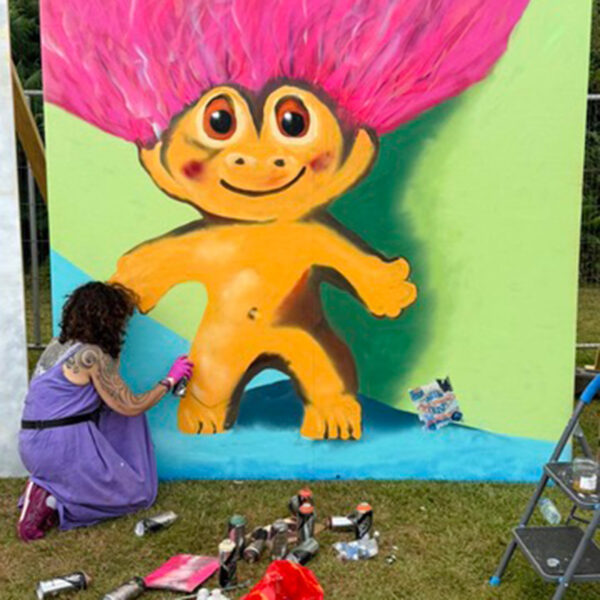
Summer Experiments: Spray Paint, Sketchbooks, and Starting Again
Every summer, after a collection is complete, there comes a natural pause. A breath. A moment between endings and beginnings.
Some paintings arrive in a rush. Others ask more of you. Tough was one of those pieces — layered, loud, and demanding honesty.
It asked me to dig deep, to get lost in the process, to trust in uncertainty. This blog is a walk through how it came to be: from the mess of materials to the quiet moments of clarity, and all the emotional undercurrents in between.
It’s about intuitive painting, technical decisions, and allowing a piece to reveal itself over time. What follows is a personal, behind-the-scenes look at the process — and the mindset — that shaped Tough.
I always begin with freedom. With Tough, I started with charcoal — loose, gestural marks to break the silence of the blank surface. It’s a way of saying, “I’m here, and this is beginning.” I don’t plan or sketch. I respond. I move the canvas around so that the paint flows in different directions, and I let the lines go where they want to go.
At this stage, I’m not concerned with composition. I’m concerned with energy. With rhythm. With getting into the work rather than standing outside of it. It’s about being fully present — immersed without overthinking. The joy is in the movement, the unpredictability, the sheer act of making.
“This is the part where I let the painting speak first — before I even think about answering”
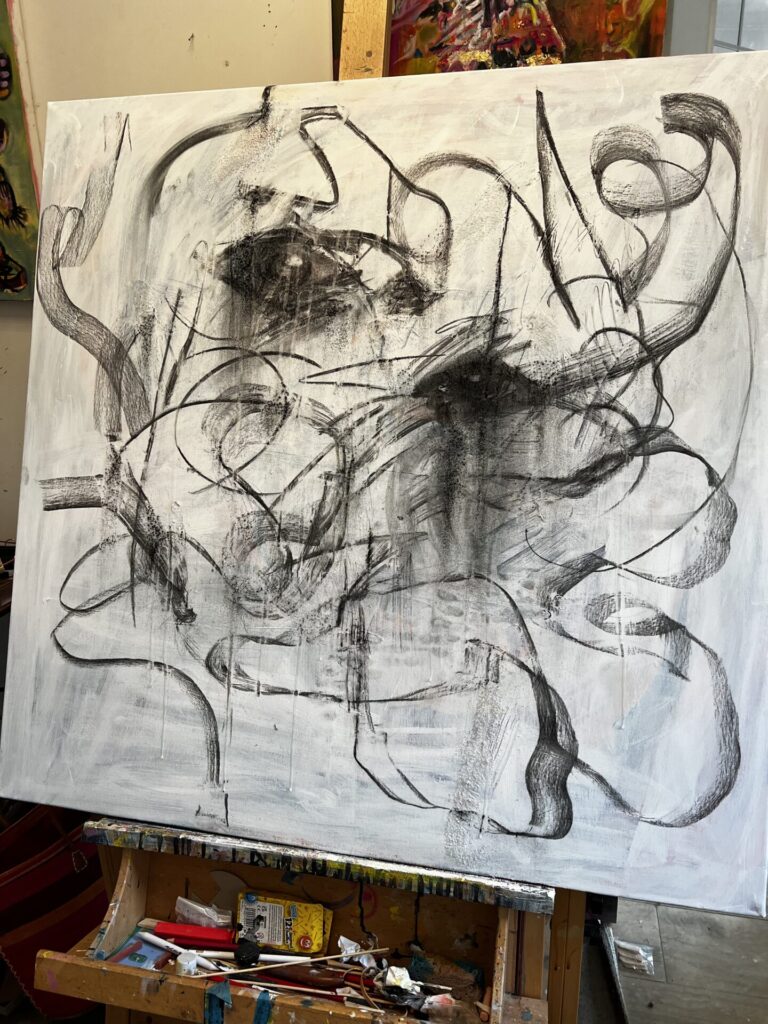
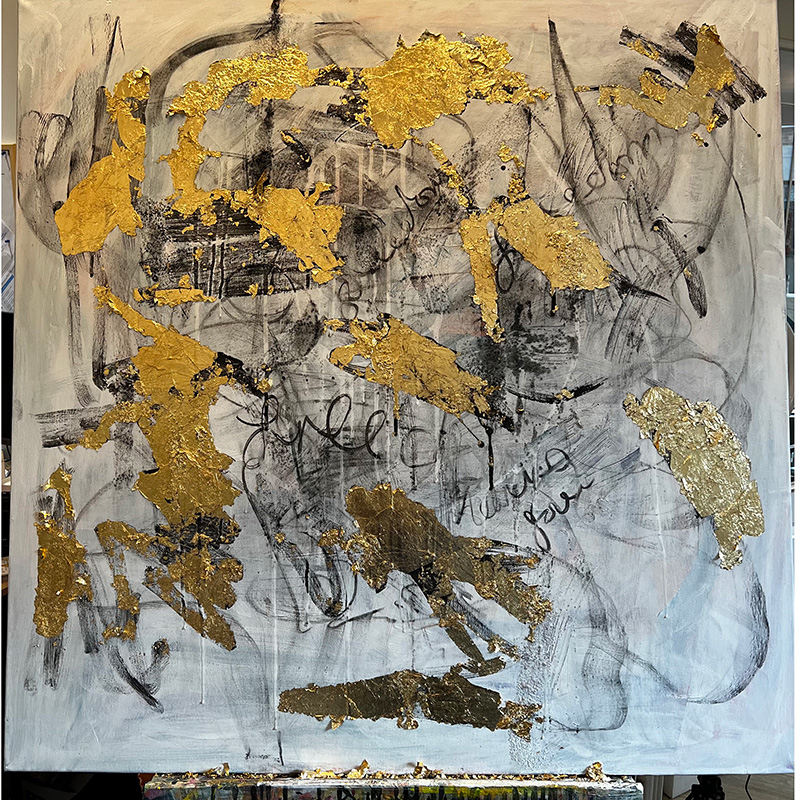
With Tough, the materials came in layers: charcoal, then gold leaf, then acrylic paint, oil bar, ink, and Posca pens. Each material brings its own voice, and they interact in unpredictable ways.
The gold catches the light differently depending on how it’s placed. The oil bar pushes back against the acrylic. The ink bleeds. The pens scribble.
Gold leaf is a favourite of mine — I’ve used it for years. It brings a glow to the surface that shifts with the light and adds both tension and beauty to the piece. Sometimes I place it intentionally, but often I simply enjoy letting it rest beside or over charcoal. Charcoal, in turn, is wonderfully expressive — when painted over, its pigment travels with the brushstroke.
I never force materials to behave. I want that rawness. That texture. That sense of the piece making itself in conversation with me. The layers contradict, interrupt, harmonise. And in that dynamic space, the painting finds its shape.
“I don’t tell the materials what to do. I let them show me what’s possible.”
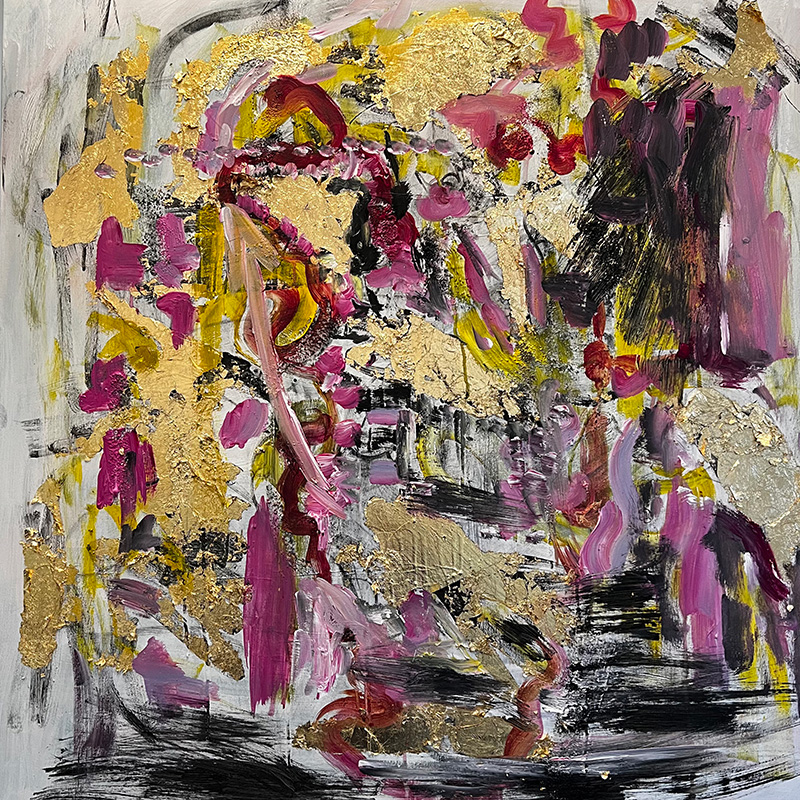
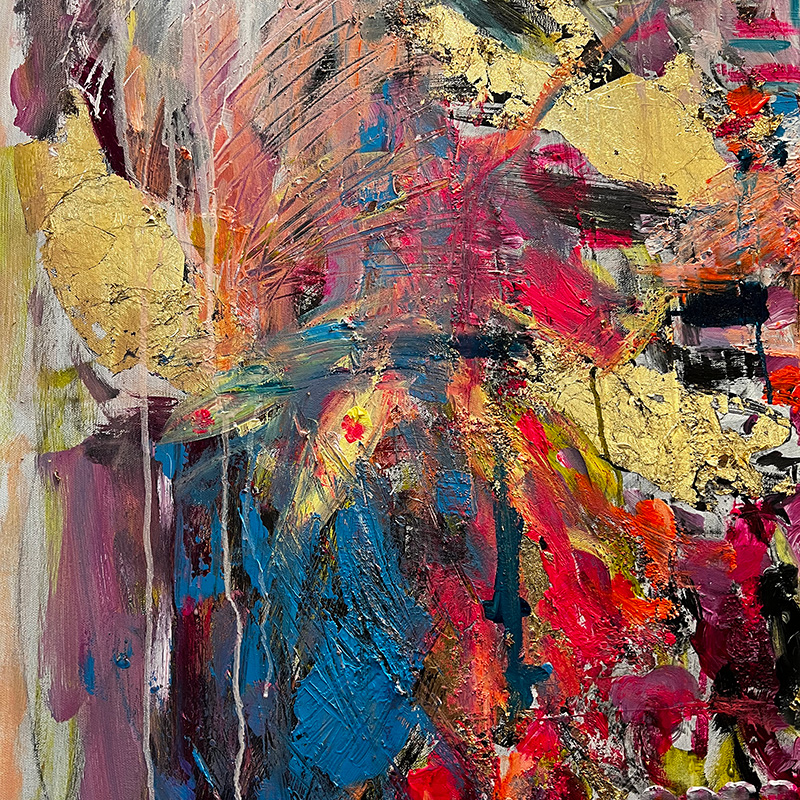
One of the most important stages in my process is stepping away.
I turn the canvas. I walk away. I look at it upside down. I take a photo on my phone and study it. These simple shifts allow me to see things differently — balance, flow, shape — and pick up on details I’d miss up close.
With Tough, I reached a moment of frustration. A “head” had emerged, but it felt like it was just floating — too central, too disconnected. I didn’t want to lose it, but it needed grounding. The challenge became: how do I give it weight without losing what works?
This is where patience matters. I’ve learned that resolving a painting too quickly often flattens it. If I rush, I rob the work of complexity. So instead, I keep layering. I dig deeper. I trust the process.
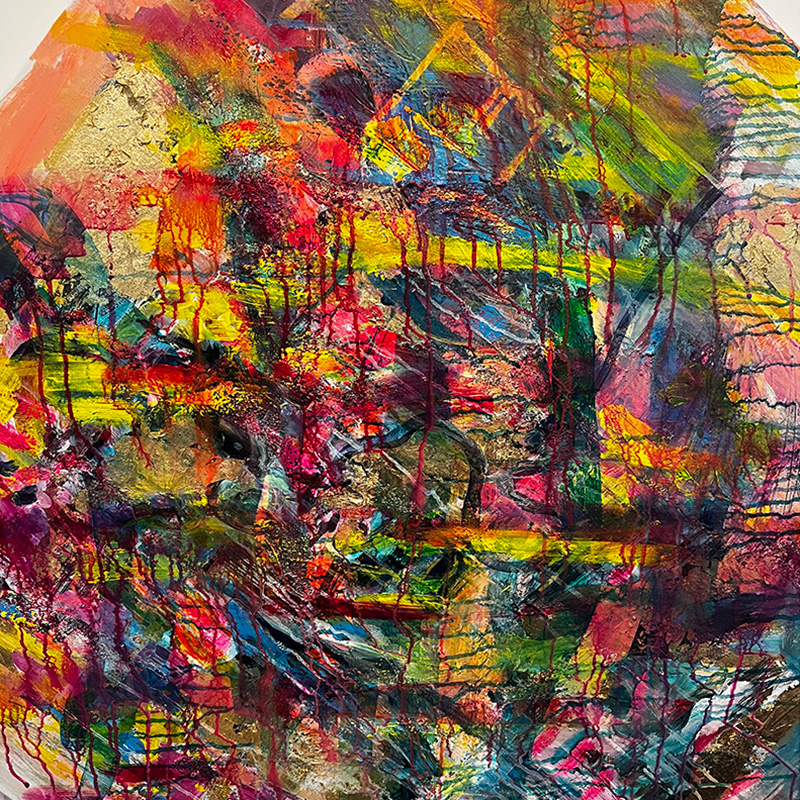
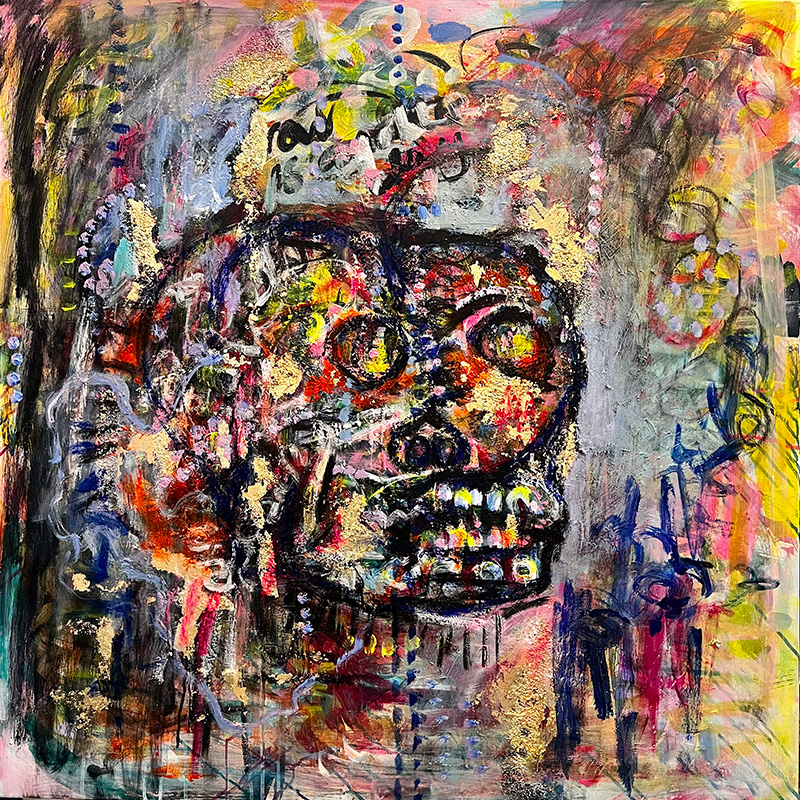
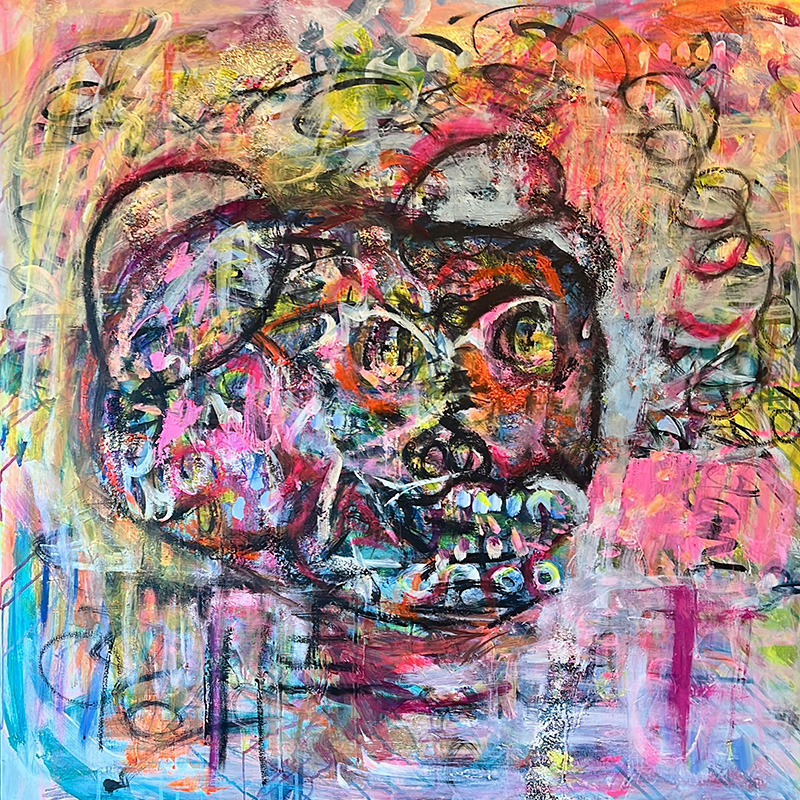
Toward the end of the process — and only with certain pieces — I bring the painting into Procreate on my iPad. Tough was one of those.
I wasn’t ready to make another bold mark on the canvas, but I needed to see what a shift might look like. In this case, I was testing how to visually “anchor” the head form — perhaps through a shadow or structural base.
Procreate is like a digital sketchbook laid over the painting. I can experiment without consequence. I can try something risky and remove it instantly. This freedom helps me make more confident final decisions.
“Procreate gives me the freedom to experiment without undoing the soul of the painting.”
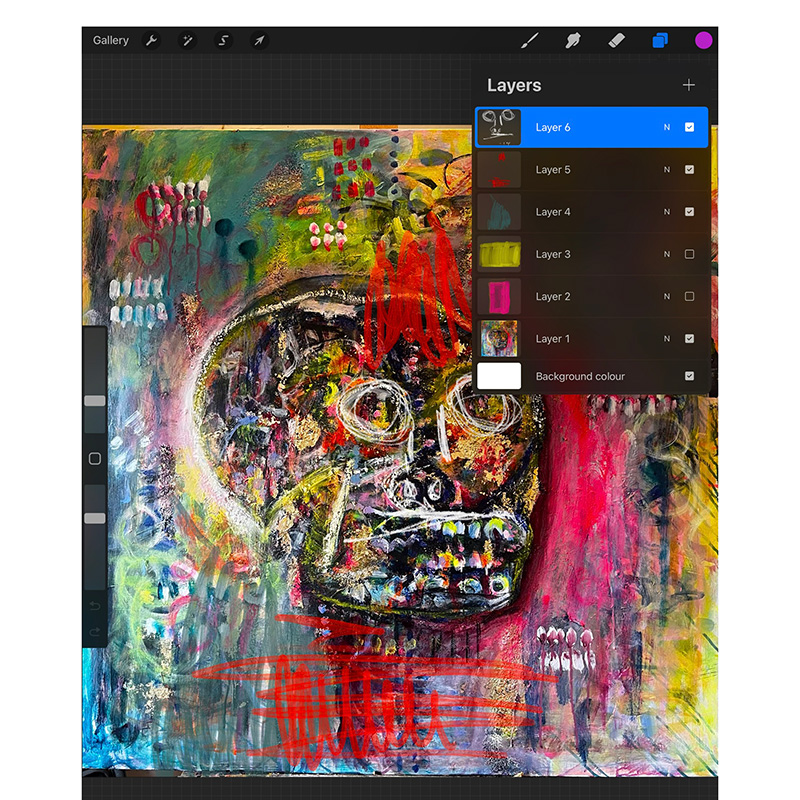
There’s always a layer of writing in my work — private words I scribble into the underpainting. I don’t share them, but they’re always there. Frustrations. Fears. Things I’m processing as I work.
With Tough, the words were especially raw. But writing them onto the canvas helped move them out of my head and into the work. I believe they live in the piece even when they’re buried under layers.
“If I try to explain too soon, I get frustrated. So I let the work speak for me.”
Sometimes the name of the painting appears halfway through. Sometimes it doesn’t come until I’m finished. Tough revealed its name gradually — a fitting reflection of both its emotional depth and the resistance I felt as I worked through it.
Eventually, something settles. Not everything is perfect, but nothing feels missing. That’s when I know a painting is done.
With Tough, that moment came after many cycles of uncertainty. I knew it was finished not because it looked right — but because it felt resolved.
Knowing when to stop is one of the hardest parts of making art. There’s always something more you could do. But more isn’t always better. Sometimes more is just noise.
“You don’t need to know where you’re going — you just need to stay with it long enough to find the truth in the paint.”

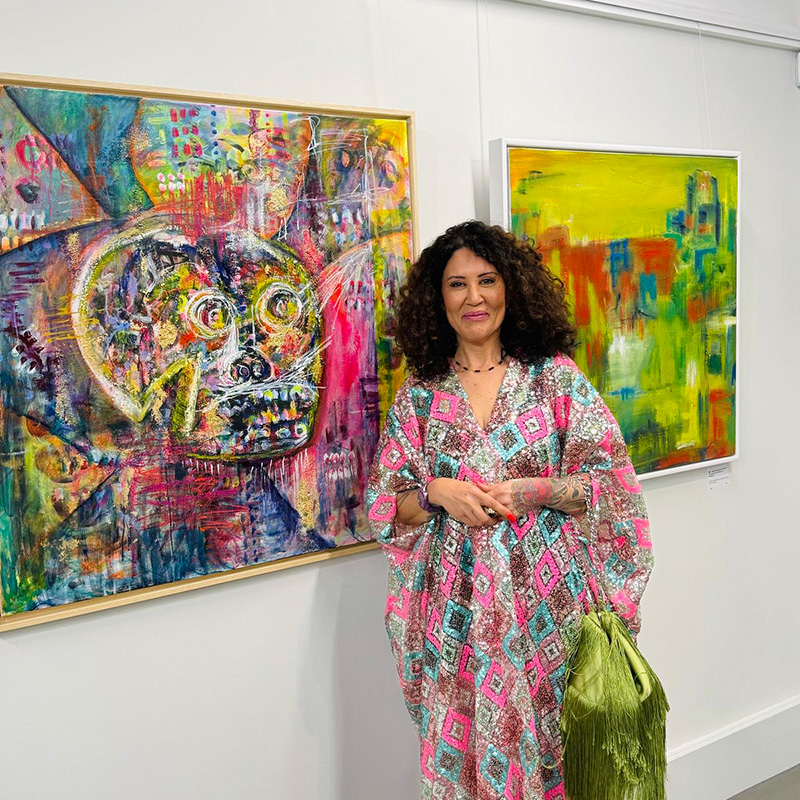
Tough isn’t just a painting. It’s a conversation — with materials, with emotion, with memory, with time.
This way of working — intuitive, layered, emotionally grounded — is how I paint. It’s how I live. And it’s how I support other artists through their own creative paths. The process is never linear, never easy. But it’s rich with meaning if you stay open to it.
There are no shortcuts. No formulas. Just a willingness to stay in it. To be curious. To not know. To keep going anyway.
And maybe, when we do that, the work becomes something honest. Something that holds its own truth — and maybe even reflects a little of ours.
This piece is available. If you’re interested in owning Tough, click here or drop me a message.

Every summer, after a collection is complete, there comes a natural pause. A breath. A moment between endings and beginnings.
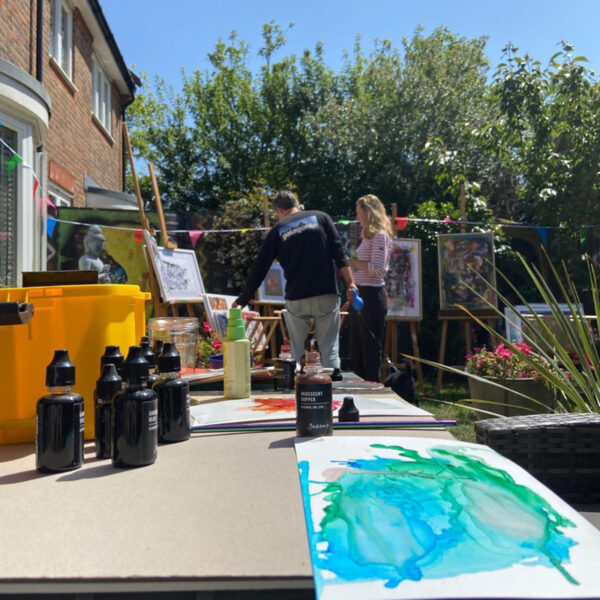
Just over a week has passed since the Chichester Open Studios, and I’ve found myself needing the space to reflect—not
Join the mailing list to keep updated on all the latest news from Louise.